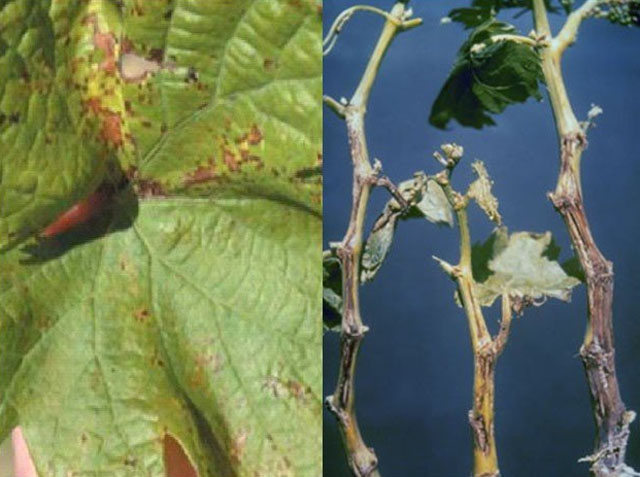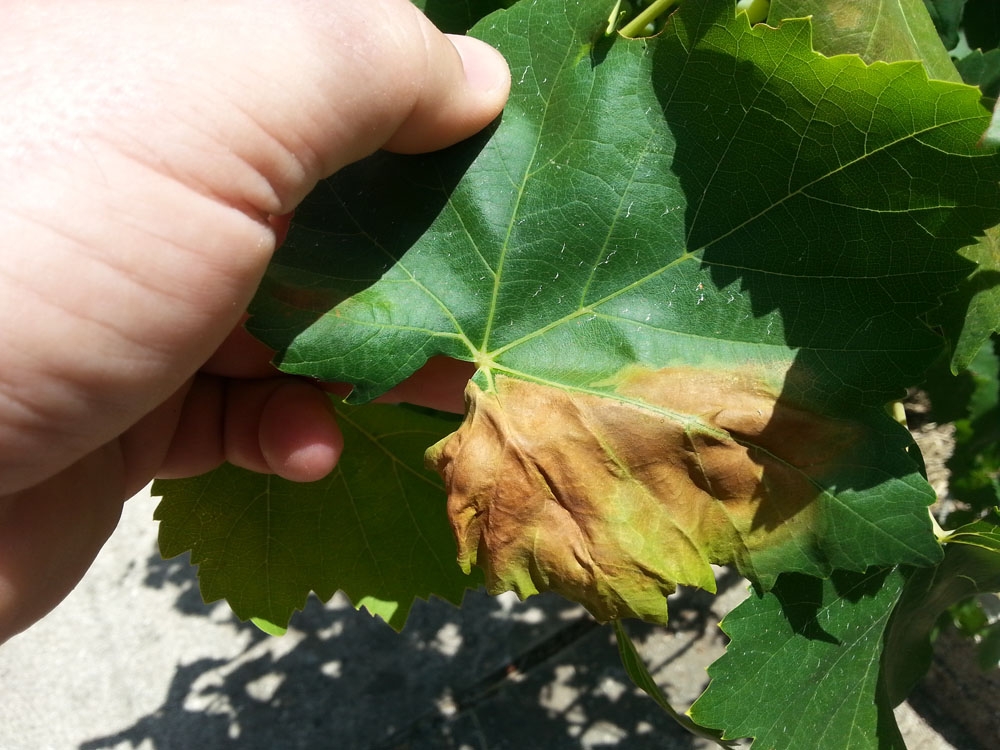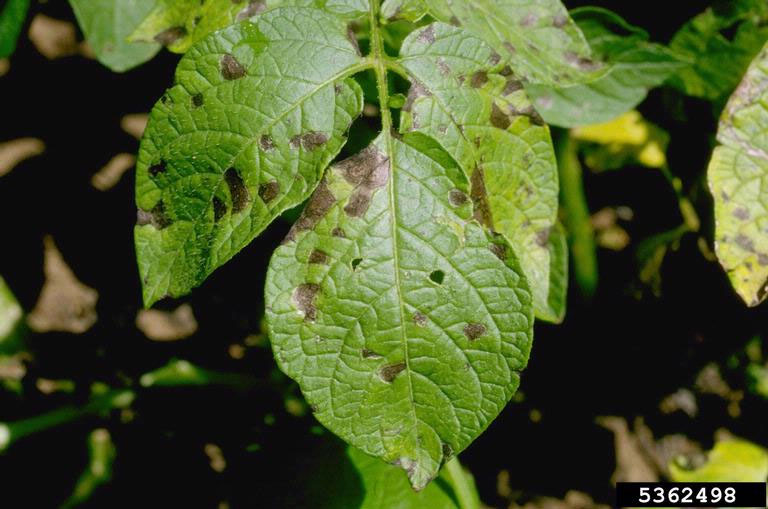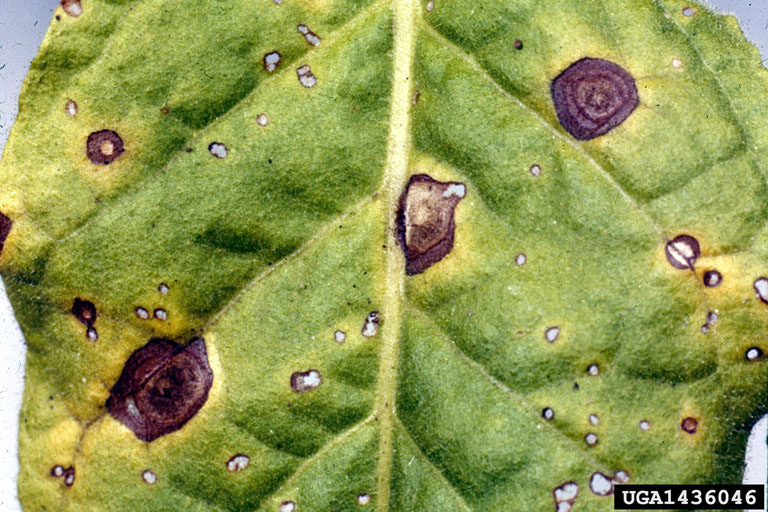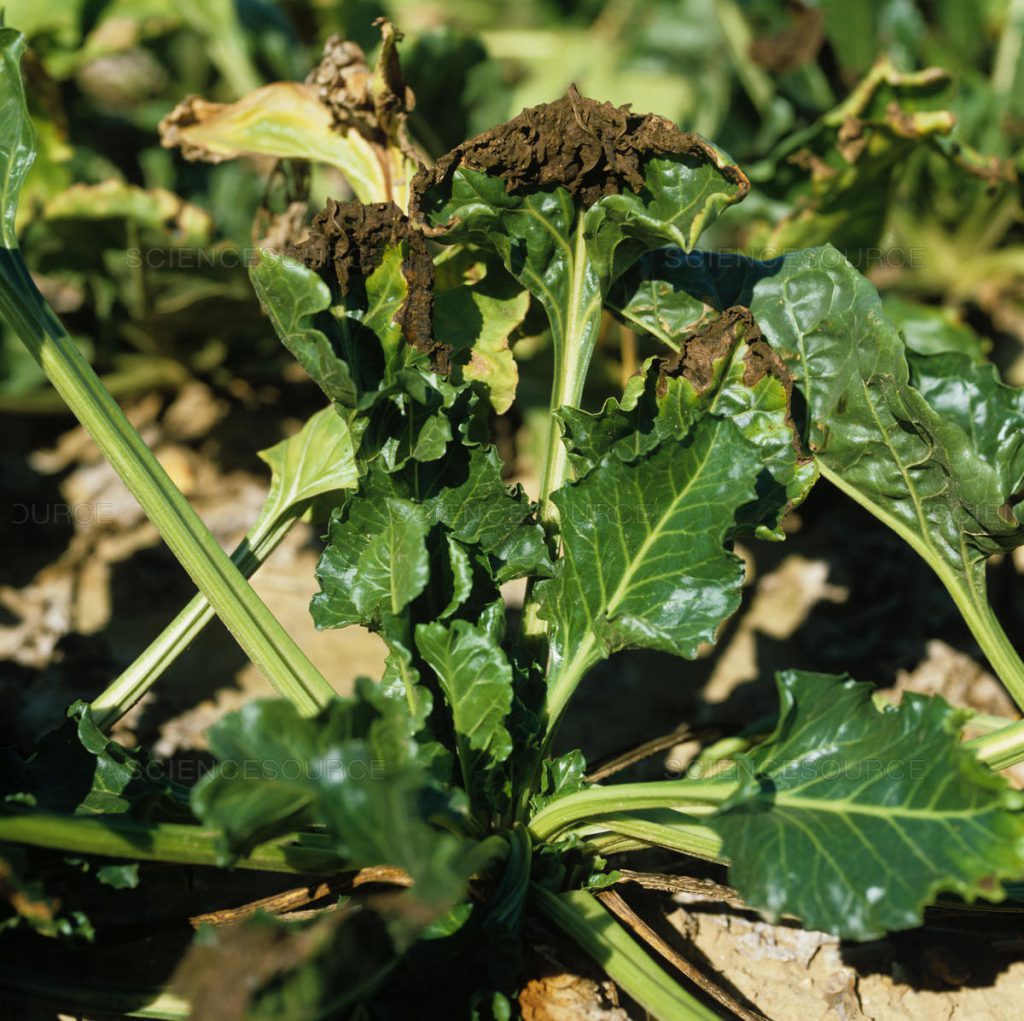Bacterial necrosis is very common in Greece and in many areas of the world. It is considered an old disease and is known by the name “chilic marazi”. It is a chronic adrobacteriosis, meaning that the bacterium establishes itself in the vessels of the wood and from there spreads and attacks the young vegetation, causing gradual drying of the stumps. Sultanina and Razaki vine varieties are considered to be the most susceptible varieties in Greece.
Scientific name: Xylophilus ampelinus
Other name: chilic marazi
Greek name: Βακτηριακή νέκρωση
Symptoms
The diagnostic symptom of bacterial necrosis is brown discoloration of the wood vessels. The heads in early spring show swellings due to tissue hyperplasia. There is also delayed and unilateral bud development or necrosis of the heads. The swollen tissues are of a cheesy consistency and later dehydrate and shrink, so that a cavity may form under the cortex (“cheese” symptom). Bulbs become necrotic. Near the base of the tendrils, fissures develop which become elongated, deep ulcers. Entire branches may dry up.
Necrotic spots or drying of areas of the lamina may appear on the leaves, especially in wet and rainy springs.
Pathogen – Growth conditions
The disease is caused by the bacterium Xylophilus ampelinus and affects only the vine. The bacterium overwinters in the wood vessels of the affected stems, from where it is transported through the plant’s vascular system and infects the young shoots. Transmission of the bacterium is usually by pruning tools but also by rain (particularly when accompanied by wind) as the bacteria emerge from the wood vessels into pruning cuts or other wounds. Particularly susceptible are stumps in November-January and young vegetation in early spring. The pathogen is transmitted from area to area by infected propagating material. The bacterium was first isolated by G. G. Panagopoulos in Greece in 1966 on Sultanina variety vines.
Treatment
For the treatment of bacterial necrosis bacterium, removal and burning of the affected stumps is recommended. Also, pruning should be done in dry weather and pruning tools should be continuously disinfected. When the weather is rainy, preventive spraying with suitable preparations is recommended to protect the tender leaves.
Source
www.bayercropscience.gr
Xylophilus ampelinus (Panagopoulos 1969) – Bacterial necrosis
Analysis of the Diversity of Xylophilus ampelinus Strains Held in CIRM-CFBP Reveals a Strongly Homogenous Species
Tags: PLANT DISEASE • VINEYARD

